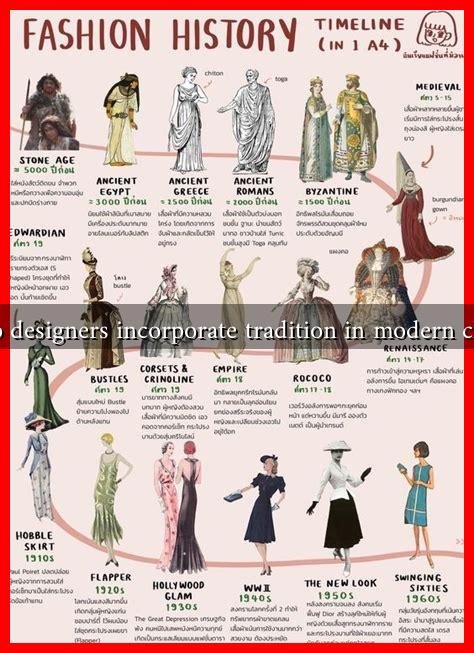-
Table of Contents
How Do Designers Incorporate Tradition in Modern Clothing?
In the ever-evolving world of fashion, the interplay between tradition and modernity is a fascinating subject. Designers today are increasingly looking to the past for inspiration, blending traditional elements with contemporary aesthetics to create unique and meaningful clothing. This article explores how designers incorporate tradition into modern clothing, highlighting key techniques, examples, and the cultural significance behind these choices.
The Importance of Tradition in Fashion
Tradition plays a crucial role in fashion, serving as a foundation upon which modern styles are built. Incorporating traditional elements can evoke nostalgia, celebrate cultural heritage, and provide a sense of identity. Here are some reasons why tradition is significant in modern clothing:
- Cultural Identity: Traditional clothing often reflects the values, beliefs, and history of a culture, allowing designers to express their roots.
- Artistic Inspiration: Many designers draw inspiration from traditional textiles, patterns, and techniques, infusing their collections with rich narratives.
- Consumer Demand: As consumers become more conscious of sustainability and ethical fashion, there is a growing interest in clothing that tells a story and has cultural significance.
Techniques for Incorporating Tradition
Designers employ various techniques to weave traditional elements into modern clothing. Here are some common methods:
- Textiles and Fabrics: Utilizing traditional fabrics such as ikat, batik, or handwoven textiles can add depth and authenticity to modern designs.
- Patterns and Motifs: Incorporating traditional patterns, such as paisley or floral designs, can create a visual connection to cultural heritage.
- Silhouettes and Cuts: Adapting traditional garment shapes, like the kimono or sari, into contemporary silhouettes can bridge the gap between old and new.
- Techniques and Craftsmanship: Employing traditional crafting techniques, such as embroidery or weaving, can enhance the quality and uniqueness of modern pieces.
Case Studies: Designers Blending Tradition with Modernity
Several designers have successfully integrated traditional elements into their modern collections, showcasing the beauty of this fusion:
- Isabel Marant: The French designer often incorporates ethnic prints and bohemian styles into her collections, drawing inspiration from various cultures while maintaining a contemporary edge.
- Roksanda Ilincic: Known for her use of bold colors and geometric shapes, Ilincic often references traditional Eastern European garments, reinterpreting them in a modern context.
- Vivienne Westwood: A pioneer of punk fashion, Westwood frequently incorporates historical elements into her designs, using tartan patterns and Victorian silhouettes to create a unique blend of past and present.
Statistics and Trends
The trend of incorporating tradition into modern clothing is not just a passing fad; it reflects broader shifts in consumer behavior and fashion industry practices. According to a report by McKinsey & Company, 66% of consumers are willing to pay more for sustainable brands, which often include traditional craftsmanship and materials. Additionally, a survey by the Fashion Institute of Technology found that 70% of fashion students believe that understanding cultural heritage is essential for future designers.
The Cultural Significance of Tradition in Fashion
Incorporating tradition into modern clothing is not merely an aesthetic choice; it carries cultural significance. By honoring traditional practices, designers can:
- Preserve Heritage: Traditional techniques and designs can be at risk of disappearing; incorporating them into modern fashion helps keep these practices alive.
- Foster Inclusivity: Celebrating diverse cultural traditions in fashion promotes inclusivity and respect for different backgrounds.
- Encourage Ethical Practices: Many traditional methods are sustainable and ethical, aligning with the growing demand for responsible fashion.
Conclusion
Designers today are skillfully blending tradition with modernity, creating clothing that resonates with consumers on multiple levels. By incorporating traditional textiles, patterns, and techniques, they not only celebrate cultural heritage but also respond to the growing demand for sustainable and meaningful fashion. As the industry continues to evolve, the fusion of tradition and modernity will likely remain a vital aspect of design, enriching the narrative of clothing and fostering a deeper connection between the wearer and their cultural roots.
For more insights into the intersection of tradition and modern fashion, you can explore resources like Business of Fashion.

